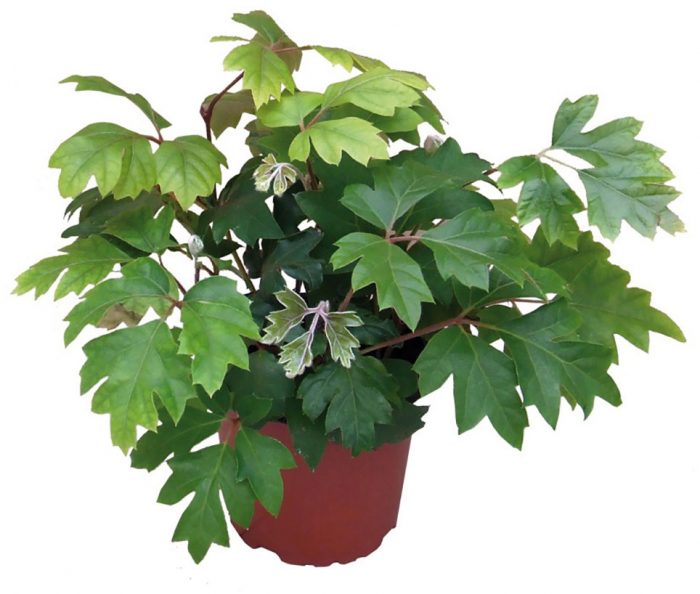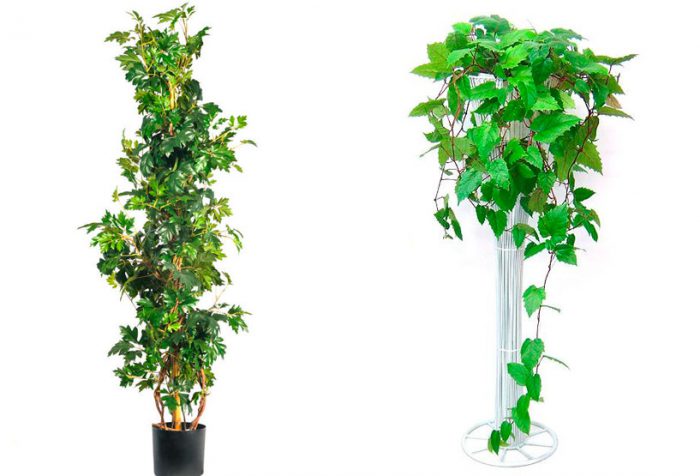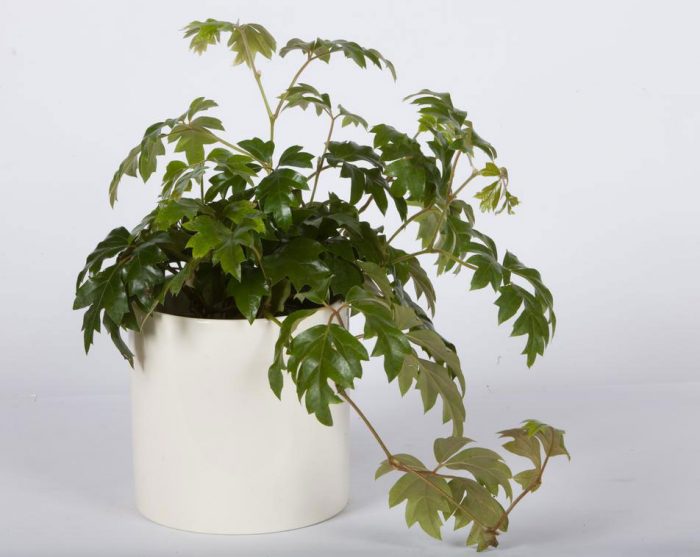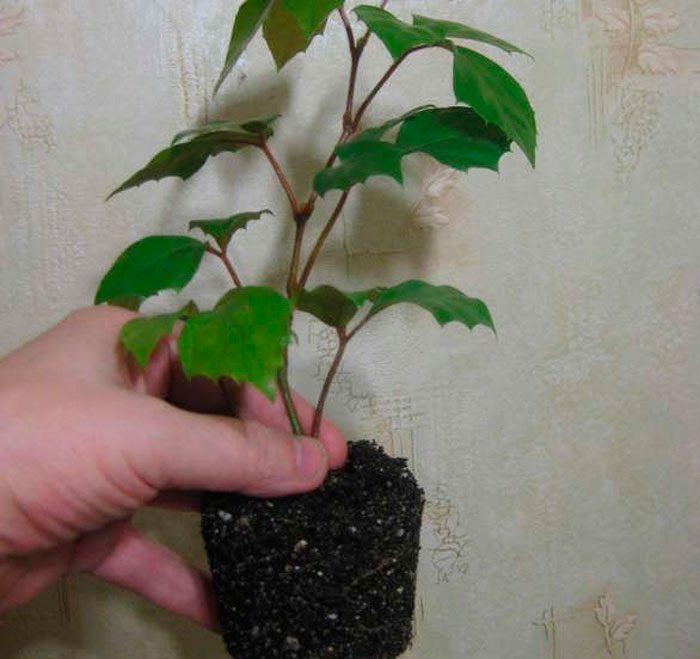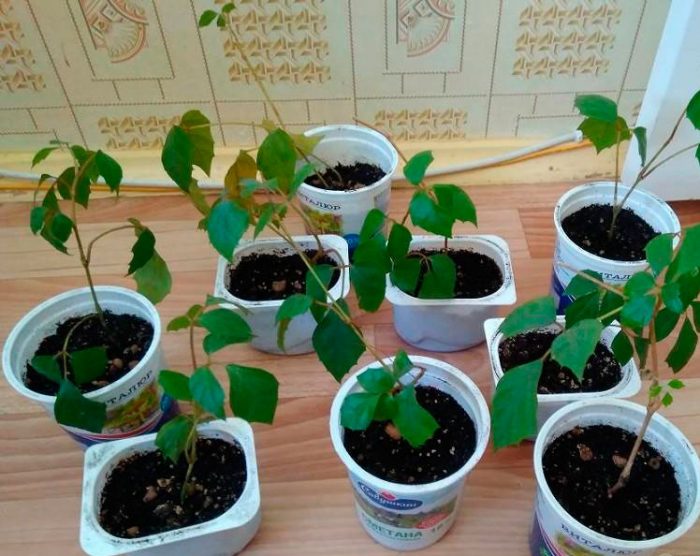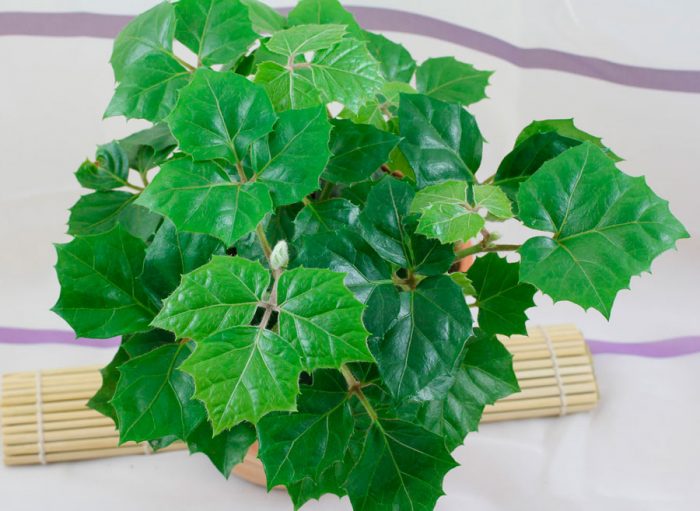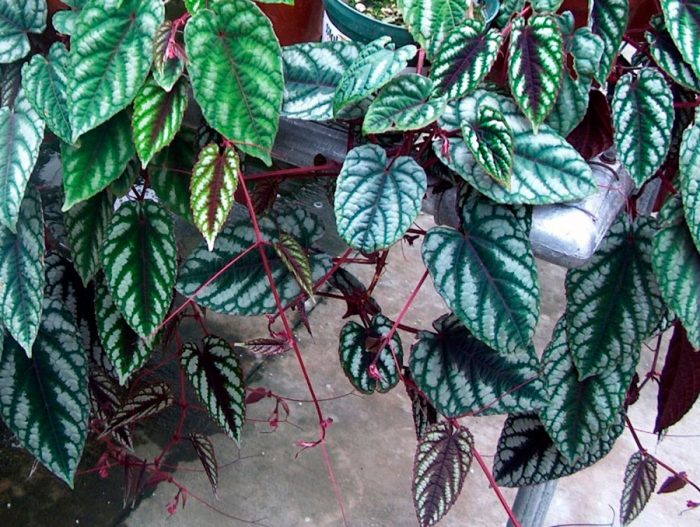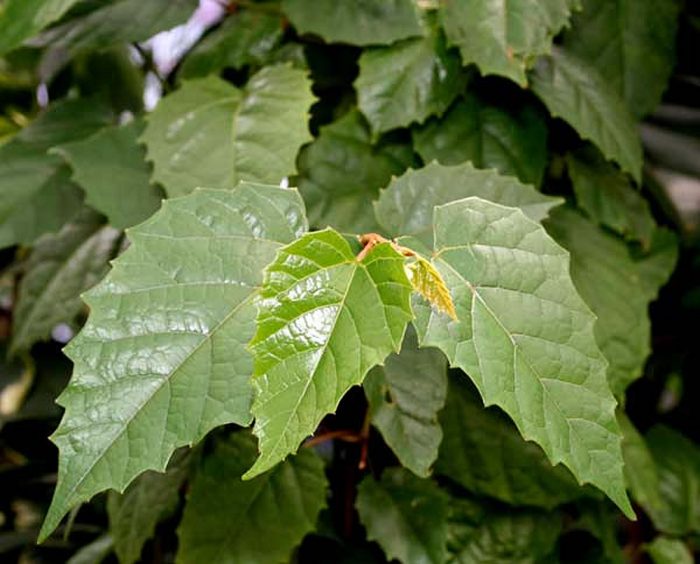Indoor vine cissus is very popular with flower growers. And they appreciate the spectacular leaves in it, and also the fact that it grows very quickly. Also, the advantage of such a culture is its unpretentiousness. That is why both an experienced florist and a beginner can decorate their home with such a vine.
Content
Features of cissus
Cissus is a vine that belongs to the grape family. At home, it is grown as an ampelous plant. The people also call it "home grapes", or "birch". This genus unites about 300 species that can be found in natural conditions. Most of the species in nature grows in areas with subtropical and tropical climates. Cissus grows tendrils with which it clings to the support. The shape of the foliage depends on the variety and can be whole or dissected.
When grown at home on a liana, flowers appear extremely rarely. False inflorescences of an umbrella-shaped form include small faded flowers that are of no decorative value. Liana is appreciated for its beautiful foliage. They grow it in hanging pots. Cissus can be used to decorate both offices and apartments, as well as glazed balconies.
It was noticed by flower growers that if favorable conditions are created for such a vine, it will please with very fast growth. The plant rapidly braids the support, while it grows a large number of lush leafy stems. Liana is often grown in winter gardens.
Cissus care at home
If you decide to grow cissus at home, then you need to take into account that it does not need any special care. However, in order to grow the most effective liana, you need to know in what conditions it is most comfortable to grow. Also, proper care and suitable conditions for growth will be an excellent prevention of various diseases and the appearance of pests.
Temperature regime
Cissus belongs to heat-loving plants, and therefore for normal growth and development it requires: in the summer - from 18 to 25 degrees, and in the autumn-winter period - about 18 degrees.Make sure that the room where the vine is located is not colder than 10 degrees, and it also needs to be protected from sudden changes in temperature and drafts, otherwise all the foliage can fly around it.
Illumination
Needs bright sunlight, but it must be diffused. As a rule, each of the varieties has its own lighting requirements. For example, Antarctic cissus can be grown in shaded areas, so it can be grown in a bathroom or in a hallway with poor lighting. At the same time, rhomboid cissus needs a lot of light.
Watering
Since it is a fast growing plant with many shoots and lush foliage, special attention should be paid to watering. They should be abundant, but do not let the liquid stagnate in the root system. Keep the potting medium slightly damp at all times. The bush is watered immediately after the top layer of the soil mixture dries up. From about mid-autumn, watering should be reduced.
Humidity
It needs high air humidity, so the bush needs to be moistened from a sprayer quite often. In winter, this is done twice a day, and in summer - once a day. If the bush is not very large, then you can arrange a warm shower. For voluminous vines growing on a support, you need to wipe the foliage from time to time with a damp cloth.
Fertilizer
Liana responds well to feeding with any complete complex mineral fertilizer. It is added to the substrate every 7 days throughout the growing season. In winter, the plant does not need a lot of nutrients, so it is not necessary to feed it. However, it should be borne in mind that if in the cold season a rest period was not organized for cissus, then it continues to be fed, but already once every 15 days, and a nutrient mixture of a lower concentration is used.
Transfer
Young bushes are transplanted annually by transferring them into new pots. From the age of five, transplants are carried out less often, namely, once every 2 or 3 years. At the bottom of the pot, do not forget to make a good drainage layer, but fill it with a substrate consisting of sand, good humus, peat, turf and leafy soil, which are taken in equal parts.
Pruning
It is recommended to prune the vine in the spring. To do this, shorten the old lashes that have become less attractive. To improve branching, young shoots are pinched. The plant tolerates pruning well and after it begins to grow actively.
Reproduction methods
Since cissus is fast growing, it is very easy to propagate. There are several ways to do this.
Cuttings
Cuttings are harvested even in summer, even in winter. 3 or 4 cuttings are planted in one container for rooting, while it is filled with a fertile light substrate with a high content of peat and sand. Water them systematically and keep them warm (20 to 22 degrees). If young foliage forms on the handle, this means that roots have grown out.
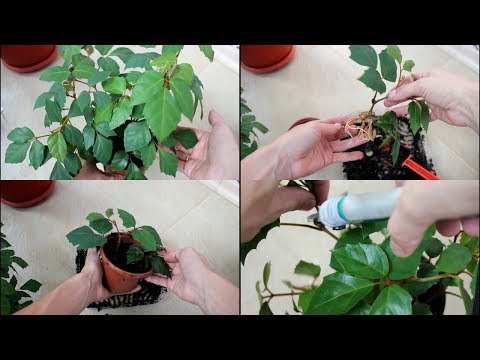

Watch this video on YouTube
Dividing the bush
If the adult cissus has grown strongly, then it can be divided during transplantation. It is recommended to shorten the shoots during planting in delenok, in this case they will take root much faster.
Growing from seeds
Seeds are mainly grown from arctic cissus. Sowing seeds is carried out in the spring. For this, a small box is taken and filled with a substrate consisting of peat and sand. Moisten the surface and spread the seeds on it. Sprinkle them with a thin layer of soil mixture, cover the container with a film (glass) on top. Crops need regular ventilation. The picking of seedlings into individual pots, reaching 70 mm in diameter, is carried out after the formation of two true leaf plates. In the future, transplants are carried out as the bushes grow.
Possible problems
If cissus is systematically examined and properly looked after, then it will be possible to avoid many problems that may arise when growing it indoors.
- If the leaves of the plant bend and begin to drymeans the air in the room is very dry. Initially, you need to moisten the space around the vine, and spray the leaves with water.
- Leaves dry and fly around this is due to the high temperature in the room. It is necessary to rearrange the flower in a cool room, and in summer you can take it out into the air.
- If the leaves turn pale or light spots appear on them, this signals too bright lighting, the leaves have a sunburn. The plant should be shaded.
- Cissus has brown spots due to strong waterlogging of the soil. It is necessary to stop watering so that the top layer of the earth dries out by 2-3 cm.
- If Cissus is actively dropping leaves, it must be rearranged from a cold room and protected from drafts. And also create the desired temperature regime for Cissus.
- Leaves wither and fade, the plant slows down growth. Cissus lacks nutrients. The appearance of black spots indicates a lack of phosphorus, brown spots - nitrogen. It is necessary to choose a fertilizer with a balanced composition and feed the vine in a timely manner.
- Cissus stops growing, young branches do not appear. The plant has taken up the entire space of the pot; transplanting into a larger pot is necessary.
Cissus species with photos and names
In total, there are about 300 species of cissus, but only a few of them are cultivated in indoor conditions by flower growers. Moreover, each of these species has several varieties that differ from each other. They have very high unpretentiousness and endurance.
Cissus rhombifolia (cissus rhombifolia)
This species was named so due to the fact that its foliage has a diamond shape. It belongs to fast growing plants. If you take good care of him, then during just one growing season he can add up to 200 cm in length. Such a vine is distinguished by high endurance, and it also grows well in places with unfavorable conditions.
Cissus discolor
This species is valuable in that it has a variegated, spectacular foliage, while the main color is pale red. On the entire surface of the plate there are specks of a silver color, while its seamy surface is purple.
Cissus striata, or striped
The foliage has a shape very similar to that of a girl's grape. Varieties with a pale red color are grown as decorative lianas. Differs in endurance, unpretentiousness and rapid growth.
Antarctic cissus (cissus antarctica)
This highly decorative look is more demanding in its care. With poor lighting, the growth of the bush slows down, and it can also suffer from excessively low air humidity. The foliage color is green, monochromatic.
The most decorative of all home-grown cissus is the multicolored cissus. It stands out among other species for its spectacular and unusual color. However, you need to be prepared for the fact that growing it is not so easy. In nature, such a plant is found in the tropics. Therefore, in order for the vine to grow and develop quickly, the air temperature in the room must be at least 25 degrees all the time, and it also needs high humidity. Local residents of the island of Java cut the shoots of the vine and drink its juice.
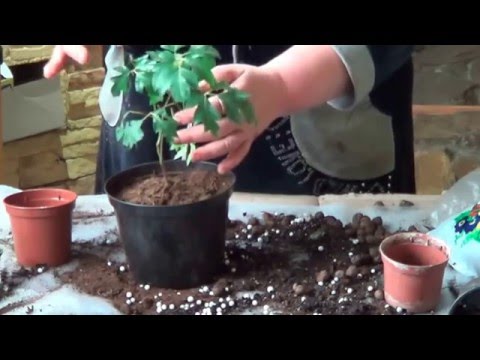

Watch this video on YouTube

